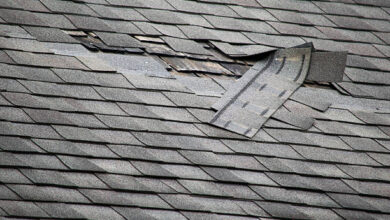Do PVC Ceiling Tiles Absorb Sound?
In the world of interior design and home improvement, the quest for aesthetically pleasing yet functional solutions is an ongoing journey. Homeowners and designers alike are constantly seeking materials that not only enhance the visual appeal of a space but also contribute to its acoustic performance. One such material that has gained popularity in recent years is PVC ceiling tiles.
As these tiles continue to make their mark in the design landscape, one burning question arises: do PVC ceiling tiles absorb sound? Let’s delve into the acoustic characteristics of PVC Ceiling Tiles 2×4 and explore whether they can be a sound-absorbing solution for your space.
Understanding Sound Absorption
Before we dive into the specifics of PVC ceiling tiles, it’s essential to grasp the fundamentals of sound absorption. Sound absorption refers to the process by which sound energy is taken in and converted into heat, rather than being reflected back into the environment. Materials that possess sound-absorbing properties are crucial in creating acoustically balanced spaces, reducing noise levels, and improving overall comfort.
Traditional sound-absorbing materials include acoustic panels, fiberglass, and foam. However, the evolution of interior design has led to the exploration of alternative materials, and PVC ceiling tiles have emerged as a potential candidate.
PVC Ceiling Tiles: An Overview
Polyvinyl chloride (PVC) ceiling tiles are synthetic tiles made from a versatile plastic material known for its durability, cost-effectiveness, and low maintenance. These tiles are widely used in residential and commercial spaces for their ability to mimic the look of traditional materials like wood, metal, or plaster. Beyond their visual appeal, the question of whether PVC ceiling tiles absorb sound is a pertinent one.
Acoustic Properties of PVC Ceiling Tiles
PVC ceiling tiles, by nature, are not inherently designed to be sound-absorbing. Unlike materials explicitly created for acoustic purposes, such as mineral wool or fabric-covered panels, PVC tiles are primarily chosen for their aesthetic qualities and practical benefits. However, this does not mean that PVC ceiling tiles are entirely devoid of acoustic advantages.
Reflection vs. Absorption
While PVC ceiling tiles may not absorb sound in the same way as dedicated acoustic materials, they can play a role in controlling sound reflections within a space. Sound reflections occur when sound waves bounce off hard surfaces, creating echoes and reverberation. PVC tiles, with their smooth and reflective surfaces, can help mitigate excessive sound reflections by dispersing the waves.
Strategic Placement
The effectiveness of PVC ceiling tiles in managing sound reflections often depends on their strategic placement within a room. By installing these tiles strategically, you can influence the way sound travels and is dispersed. This can be particularly beneficial in spaces where controlling reverberation is essential, such as in large open areas or commercial environments.
Adding a Sound-Absorbing Layer
While PVC ceiling tiles may not have inherent sound-absorbing properties, there are creative solutions to enhance their acoustic performance. Some manufacturers offer PVC tiles with added acoustic backing or recommend installing additional sound-absorbing materials behind the tiles. This supplementary layer can transform standard PVC ceiling tiles into a more effective sound-absorbing solution.
Combined Solutions for Optimal Acoustics
In many cases, achieving optimal acoustic performance involves a combination of materials and strategies. While PVC ceiling tiles may contribute to managing sound reflections, combining them with dedicated sound-absorbing materials can create a comprehensive solution. This approach allows for a balance between aesthetic preferences and acoustic requirements, providing a customized solution for each space.
Installation Considerations
To maximize the potential acoustic benefits of PVC ceiling tiles, proper installation is crucial. Ensuring a tight and seamless fit, along with addressing any gaps or irregularities during installation, can contribute to better sound control. Additionally, working with a professional installer or consulting with acoustic experts can help optimize the placement and configuration of PVC ceiling tiles for enhanced acoustic performance.
Applications in Different Spaces
The suitability of PVC ceiling tiles for sound management can vary depending on the intended use of a space. While they may not be the go-to solution for dedicated home theaters or recording studios, PVC tiles can be a practical choice for offices, retail spaces, restaurants, and residential areas where aesthetics and moderate sound control are priorities.
Maintenance and Durability
One of the significant advantages of PVC ceiling tiles, besides their visual appeal, is their low maintenance and durability. These tiles are resistant to moisture, making them suitable for spaces like kitchens and bathrooms. Additionally, their easy-to-clean surface ensures a long-lasting and visually appealing solution for various environments.
Environmental Considerations
As the world becomes more environmentally conscious, the choice of materials for interior spaces also comes under scrutiny. PVC, being a synthetic plastic, has faced criticism for its environmental impact. However, advancements in sustainable practices have led to the development of eco-friendly PVC alternatives, making it possible to choose PVC ceiling tiles with a lower environmental footprint.
Conclusion
In the pursuit of creating harmonious and visually stunning spaces, the question of whether PVC ceiling tiles absorb sound is nuanced. While these tiles may not be dedicated sound absorbers, their role in managing sound reflections and contributing to overall acoustic comfort should not be overlooked. Strategic installation, combined solutions, and consideration of the specific needs of a space are key factors in determining the effectiveness of PVC ceiling tiles in any given environment.
As the world of interior design continues to evolve, the integration of innovative materials like PVC ceiling tiles offers exciting possibilities for achieving both aesthetic and functional goals. By understanding the acoustic characteristics of PVC tiles and exploring creative solutions, homeowners and designers can strike a balance that transforms spaces into acoustically pleasing and visually captivating environments.
Also Read: Bathroom Ceiling Ideas to Transform Your Bathroom


